Why you can trust GamesRadar+
At the heart of Dissidia is its story mode, which is where all the cutscenes we mentioned earlier come into play. It’s also a lot longer than you might think – each of the 10 protagonists gets a separate storyline (in which each one hunts for a unique power crystal), and finishing at least one of them opens up “Shade Impulse,” the second half of the story in which the heroes unite to fight the dark god Chaos.
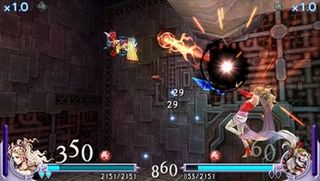
Chaos is, incidentally, the exact kind of final boss Japanese fighting-game designers seem to be so fond of these days – the kind so difficult that playing through the rest of the game doesn’t even begin to prepare you for what’s ahead. Granted, that makes it awesome when you finally beat him, but doing so takes careful memorization of his attack patterns, expert timing and inhuman patience.
Regardless of which half of the story you’re playing in, a big part of the reason story mode is as long as it is is that it’s structured like a board game, in which you’ll pick fights with seemingly endless clones of the other fighters.
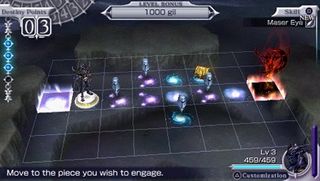
This would get tedious if not for three things: first, the “fake” opponents differ wildly in terms of power and intelligence, and a lot of them will drop prizes if you meet certain conditions in battle. Second, plenty of the battles are optional, for those who want to grind. Third, the grinding makes the rare face-offs against “real” enemies (which usually come with a cutscene or at least a little bit of text) much more gratifying, if only because you know they’ll pose a more serious challenge.
Playing through story mode also enables you to beef up the character of your choice with new equipment, new attacks and accessories that can boost your attributes and combat abilities. You’ll also find Summons as you play, and while these won’t actually appear and fight for you, they can be equipped to give you a quick charge or cut down your opponent’s Bravery when certain conditions are met.
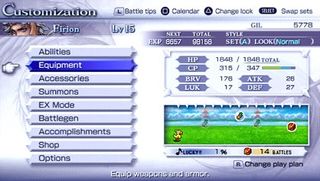
Meanwhile, if grinding and cutscenes aren’t really your thing, you can jump straight into the game’s arcade mode for quick battles against random opponents. There’s also an ad-hoc mode for pitting your beefed-up characters against a friend’s or trading “ghost” gameplay data to fight against. Online connectivity would have been much better, of course, but then this is a Japanese game, meant to be played primarily on commuter trains within easy reach of other players.
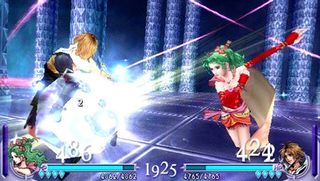
On the upside, Dissidia has a bunch of other weird stuff going on just beneath the surface, including hidden Moogles that send you letters with special bonuses for every day you play, which can in turn be used to unlock new characters and other extras. It also has an install feature that dramatically cuts down on load times, so maybe we can forgive the lack of true online play this once.
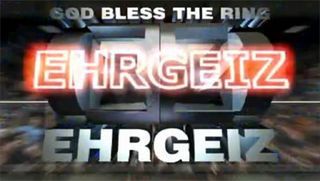
Above: Besides, it’s already better than 1998’s Ehrgeiz, the last fighting game to star Final Fantasy characters
More info
| Genre | Role Playing |
| Description | Dissidia: Final Fantasy delivers a great experience to fans with its deep storylines and presentation. For non-fans? One of the best fighting games for the portable system. |
| Franchise name | Final Fantasy |
| UK franchise name | Final Fantasy |
| Platform | "PSP" |
| US censor rating | "Teen" |
| UK censor rating | "Rating Pending" |
| Release date | 1 January 1970 (US), 1 January 1970 (UK) |

In just 24 hours, absurdly lucky Pokemon player casually defies 1-in-65,000 odds to find a shiny Eevee that shouldn't exist and is impossible to keep

Fallout star has made Letterboxd lists of his most famous characters' favorite movies

Batman fights Wolverine on a stunning Jim Lee cover for the upcoming DC Versus Marvel Omnibus

